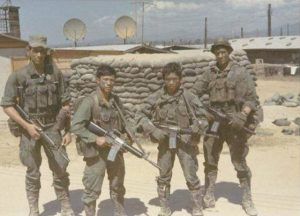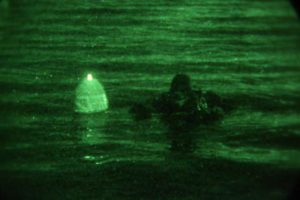
In the early morning hours of March 26, 2024, the container ship MV Dali lost all power and steering as it attempted to depart the Port of Baltimore, heading to Colombo, Sri Lanka. Drifting with the current of the Patapsco River, and influenced by inertia, the massive ship rammed the southern support tower holding up the Francis Scott Key Bridge (also known as the “Key Bridge”). The impact resulted in the more or less instantaneous collapse of the bridge’s main span onto the ship’s bow, and causing several highway maintenance workers (working the night shift to repair potholes on the bridge) to fall into the frigid waters; tragically, although two of the workers were rescued, another six are missing and presumed dead, as of this writing (March 29). There is conjecture as to whether anyone else went into the water, as there may be other vehicles under the wreckage.
Given that less than ninety-six hours, as of this writing, have elapsed since the incident, very little hard information is available concerning the details of what actually happened. From all appearances, however, it appears that the crew and the harbor pilots aboard were caught completely by surprise. Given that, they appear to have done everything they could to try and mitigate the disaster; the ‘Mayday’ call issued by one of the harbor pilots almost certainly saved dozens of lives, by getting Maryland law enforcement and transit authorities to lock the US Highway I-695 toll booths prior to the impact.
The MV Dali is a container ship of middle size, as international cargo carriers go, being rated for just under ten thousand Twenty-foot Equivalent Units (TEU); in practical terms for the layman, this equates to carrying the equivalent of about 5,000 semi-truck trailers as cargo; in contrast, the EVER GIVEN, which grounded and blocked both directions of the Suez Canal almost exactly three years ago, on March 23, 2021, is one of the largest container ships in the world, clocking in at over 20,000 TEU’s. The Dali is homeported in Singapore, but is currently under lease to the MAERSK line, one of the leading shippers in the world, and was operating with a crew of 22 from India. Despite very ugly comments from certain sectors, nothing appears to have been wrong with the crew’s performance. Similarly, the ship was in good repair, having been inspected at previous ports of call, as well as in the Port of Baltimore itself. Singapore is very careful about keeping vessels it has granted a flag to, to maintaining a high standard of operations and repair.
Perhaps inevitably, the sun had barely risen over the accident scene before speculation began to run wild online, with breathlessly frenetic claims ranging from insurance scams to cyber hacking, to an attack by “Insert Foreign Entity Here”, to a “Black Swan”/“false flag” event sparked by “Insert Portion of the US Government Here”. While many, if not most, such ideas border on the demented, given the events of the preceding two or three decades – depending on where the counting begins – they do need to be looked into, at some realistic level.
That is what we will now proceed to.
Conspiracy – or Accident?
The first thing to understand is that maritime accidents happen all the time. The Dali itself had a docking accident in 2016, and there is the EVER GIVEN incident referenced above. There was actually a ship grounding in 2022 in Baltimore…things happen all the time and sometimes, they happen in the worst possible places.
This incident is almost certainly just as it appears: a devastating and tragic accident, occurring at precisely the worst place and time…
However…People jumping to a conspiratorial view of this incident are not necessarily kooks and weirdoes – although there are, of course the obligatory “occult” explanations that are…”inventively creative” is probably the best term.
There seems to have been nothing wrong as the Dali was towed away from the dock by Port of Baltimore tugboats. The ship was escorted by tugs to make a tight U-Turn as it left dockside, and began to build up speed; this is a completely normal procedure for most large vessels when leaving port. Neither was its acceleration to c.8 knots (9 mph/15 kph) unusual for its position in the Patapsco River’s channel. Likewise, the tugboats disconnecting as the Dali completed its U-Turn unusual; again, this is completely normal procedure for leaving port.
The problems begin as the ship neared the bridge. Videos of the ship approaching the bridge clearly show its lights shutting off, followed it beginning to drift. The Dali displaces nearly 149,000 tons, is nearly 1,000 feet in length, and stands nearly 100 feet from the surface to its highest point. Losing power to engines, steering or both, renders ships of this size completely at the mercy of both wind and current, as is shows by the ship immediately beginning to drift in the current. The crew apparently tried an emergency restart on the ship’s generators, producing the cloud of smoke seen in the video, and a momentary restoration of power…By then, however, it was too late, as the power failure occurred as the ship was less than a mile from the bridge – ships this large cannot stop on a dime, and by the time power was restored, it was far too late to correct the drift.
One underhanded and disingenuous tactic used by various “conspiracy theorists” (as opposed to “conspiracy analysts”) is to make assessments based on sped-up versions of the video. This kind of gaslighting warps the perspective of the unwary and/or inexperienced viewer; it is very much the kind of behavior that gives “independent researchers” a bad name.
But…the timing of the power loss is frankly suspicious, as it occurred at precisely the worst possible moment, where the crew and pilots would have essentially no way of diverting – much less stopping – the vessel, preventing an impact with the bridge.
Likewise, there is nothing unusual about the ship being able to knock the bridge down. The Francis Scott Key Bridge began construction in 1972, and opened in 1977. Commercial ships were far smaller in those days, but even so, a large vessel ramming the bridge supports head-on – deliberate or not – would almost certainly cause a catastrophic collapse; this would be the case with most bridges in the world, then as now. If there was a serious fault in the bridge’s design, it was in the near-total lack of protective “dolphin” barriers to protect the bridge supports, which certainly allowed the Dali to strike the support tower directly.
Comments have questioned what appears to be a “dynamite charge” exploding at the moment of impact, directly above the bow of the ship. In reality, this was a power cable running along the top of the bridge girders snapping, throwing off a shower of sparks as it separated…It was not an explosive, nor was it a thermite [https://en.wikipedia.org/wiki/Thermite] charge – that is not how those things work…
…Still, the timing remains highly questionable. Based on the notion that this was a deliberate act of sabotage, we will now look at potential “Who’s” and “Why’s”.
Who?
Assuming that this was a deliberate act, one in which the ship’s control systems were hacked or sabotaged in some other way, the first question to ask is “Who” would carry out such an attack?
The number of groups around the world with the capacity to hack a commercial vessel at precisely the right time and place to cause significant damage is almost too large to calculate. At the same time, such a “hostile foreign entity” would have to have very precise and highly detailed intelligence on the vessel and the Port of Baltimore in order to carry out their attack effectively. While certainly difficult, such a potentially hostile foreign entity could well have such a capability.
The next potential culprit, unfortunately, consists of any number of factions within the power structures of the United States Government, itself. This is, sadly, a significant possibility, given the relentless exposure of the openly hostile and highly illegal actions carried out by various groups within the US Government over the course of the last seventy-odd years, if not more, actions that range from COINTELPRO, to Project Megiddo, to the Library Awareness Program, to any number of operations carried out in the aftermath of the 9-11 Attacks.
Why?
The next question to answer – or at least try to puzzle out – would be “Why?”
For a hostile foreign actor – whether a state like Communist China, North Korea, Russia, etc., or some flavor of terror group – shutting down a major US oceanic port for one or two months (the initial estimate of the time needed to clear the channel of debris to allow the Port of Baltimore to reopen), especially given the presence of a four-ship squadron of the Department of Transportation’s “Ready Reserve Fleet” (RRF) which supports the US Navy around the world, is definitely attractive. At the same time, while certainly a serious situation for strategic operations, this is actually not that critical of a problem, as there is redundancy built into the RRF for such situations.
What is much more serious, is the effective closure – even if temporary – of one of the busiest commercial ports in the world. Currently, projected losses are estimated at some $15 billion dollars per day, as well as closing access to the largest port importing cars into the United States. Added to this is the potential impact on the jobs of some 8,000 people in Baltimore, if not more. Overall, this is not a blow that Baltimore can easily deal with, as the port has been the only economic engine keeping the city financially above water.
Clearly, these results are highly desirable for any foreign actor.
Conversely, there is the notion of a deliberate act engineered by factions within the US government. While this possibility cannot be reasonably dismissed out of hand, it is difficult to see what they gain would be.
A simple insurance scam is rather pointless, as is the idea that delaying the ship’s cargo delivery to Sri Lanka is of such importance that it would require crippling a large vessel and blocking a major port. Similarly, staging such an incident to divert attention away from any number of ongoing political, legal, military or social issues currently plaguing the United States is hard to grasp, as even the “alternative media” is still talking about many issues besides this disaster…
Follow-throughs…?
…In both circumstances – a foreign enemy or an internal one – the telling question is the lack of “follow-on” attack[s]. When the Imperial Japanese Navy completed its raid on the US military bases at Pearl Harbor, Hawaii on December 7, 1941, it did not stop there. The Japanese military capitalized on its devastating strike, and launched a series of massive offensive operations throughout China and the Western Pacific region simultaneous to their attack. This is common throughout history – one does not commit to a major attack on a location without an immediate follow-up attack, singly or in quantity. The expenditure of assets – financial and military – simply is not worth the effort is there is no follow-on operation to capitalize on a successful strike.
Conclusion
This last point is really the best argument in favor of this entire affair being a simple, tragic accident, one that is having an impact far outside its mechanical circumstances.
There are conspiracies aplenty in the modern world. It is important to carefully examine sudden events to see if ulterior motives are factors, and spell out such motives if they are identified…at the same time, it is equally important to not assume that a conspiracy exists where it does not. That requires careful and sober examination of the incident in question.
However, just because a conspiracy is not immediately evident, that does not prevent such a situation from being exploited by the unscrupulous…as has happened before.
Forewarned is forearmed.











